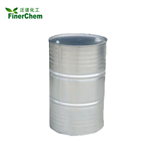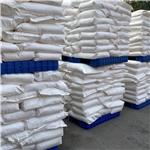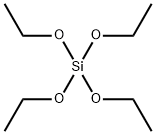Tetraethyl orthosilicate
- CAS No.
- 78-10-4
- Chemical Name:
- Tetraethyl orthosilicate
- Synonyms
- 78-10-4;TEOS;TETRAETHOXYSILANE;ETHYL SILICATE;TETRAETHYL SILICATE;ETHYL SILICATE 40;TETRAETHOXYSILANE-28;Tetraethoxysilane (TEOS);es28;es100
- CBNumber:
- CB3854369
- Molecular Formula:
- C8H20O4Si
- Molecular Weight:
- 208.33
- MDL Number:
- MFCD00009062
- MOL File:
- 78-10-4.mol
| Melting point | -77 °C |
|---|---|
| Boiling point | 168 °C(lit.) |
| Density | 0.933 g/mL at 20 °C(lit.) |
| vapor density | 7.2 (vs air) |
| vapor pressure | <1 mm Hg ( 20 °C) |
| refractive index |
n |
| Flash point | 116 °F |
| storage temp. | Store below +30°C. |
| solubility | Soluble in ethanol and 2-propanol. |
| form | Liquid |
| Specific Gravity | 0.934 |
| color | Colorless |
| explosive limit | 1.3-23%(V) |
| Water Solubility | Hydrolysis |
| FreezingPoint | -77℃ |
| Sensitive | Moisture Sensitive |
| Hydrolytic Sensitivity | 7: reacts slowly with moisture/water |
| Merck | 14,3851 |
| BRN | 1422225 |
| Exposure limits |
ACGIH: TWA 10 ppm OSHA: TWA 100 ppm(850 mg/m3) NIOSH: IDLH 700 ppm; TWA 10 ppm(85 mg/m3) |
| Dielectric constant | 4.1(20℃) |
| Stability | Stable. Flammable. Incompatible with strong oxidizing agents, water, alkalies, mineral acids. |
| InChIKey | BOTDANWDWHJENH-UHFFFAOYSA-N |
| CAS DataBase Reference | 78-10-4(CAS DataBase Reference) |
| EWG's Food Scores | 2 |
| FDA UNII | 42064KRE49 |
| NIST Chemistry Reference | Silicic acid (H4sio4), tetraethyl ester(78-10-4) |
| EPA Substance Registry System | Tetraethyl silicate (78-10-4) |
SAFETY
Risk and Safety Statements
| Symbol(GHS) |   GHS02,GHS07 |
|||||||||
|---|---|---|---|---|---|---|---|---|---|---|
| Signal word | Warning | |||||||||
| Hazard statements | H226-H319-H332-H335 | |||||||||
| Precautionary statements | P210-P233-P240-P241-P304+P340+P312-P305+P351+P338 | |||||||||
| Hazard Codes | Xn | |||||||||
| Risk Statements | 10-20-36/37-36/37/38 | |||||||||
| Safety Statements | 16-36/37/39-26-24/25 | |||||||||
| RIDADR | UN 1292 3/PG 3 | |||||||||
| WGK Germany | 1 | |||||||||
| RTECS | VV9450000 | |||||||||
| Autoignition Temperature | 230 °C | |||||||||
| TSCA | Yes | |||||||||
| HS Code | 2920 90 70 | |||||||||
| HazardClass | 3 | |||||||||
| PackingGroup | III | |||||||||
| Toxicity | LD50 orally in Rabbit: 6270 mg/kg LD50 dermal Rabbit 5860 mg/kg | |||||||||
| IDLA | 700 ppm | |||||||||
| NFPA 704 |
|
Tetraethyl orthosilicate price More Price(40)
| Manufacturer | Product number | Product description | CAS number | Packaging | Price | Updated | Buy |
|---|---|---|---|---|---|---|---|
| Sigma-Aldrich | 8.00658 | Tetraethyl orthosilicate for synthesis | 78-10-4 | 25mL | $31.8 | 2024-03-01 | Buy |
| Sigma-Aldrich | 8.00658 | Tetraethyl orthosilicate for synthesis | 78-10-4 | 250ML | $52.9 | 2024-03-01 | Buy |
| Sigma-Aldrich | 8.00658 | Tetraethyl orthosilicate for synthesis | 78-10-4 | 1L | $158 | 2024-03-01 | Buy |
| Sigma-Aldrich | 8.00658 | Tetraethyl orthosilicate for synthesis | 78-10-4 | 10Kg | $337 | 2024-03-01 | Buy |
| Sigma-Aldrich | 8.00658 | Tetraethyl orthosilicate for synthesis | 78-10-4 | 50kg | $1350 | 2024-03-01 | Buy |
Tetraethyl orthosilicate Chemical Properties,Uses,Production
Ethyl silicate
Ethyl silicate is also known as Tetraethyl orthosilicate,colorless, transparent liquid with special smell. Stable under the condition of anhydrous, when encountering water, it decomposes into ethanol and silicic acid, cloudy in moist air, soluble in alcohol, ether and other organic solvents. It is toxic, strong irritative to the human eye and respiratory tract. it is prepared by distillation after the reaction of silicon tetrachloride with ethanol. It is used for producing heat and chemical resistant coatings and preparing silicone solvent, can also be used in organic synthesis, the basic raw material for preparing advanced crystal, used as optical glass processing agent, binders, insulation materials for electronics industry, etc.
Ethyl silicate itself is not able to bind, if ethyl silicate is used as refractories binding agents, it must be hydrolyzed before use. TEOS hydrolysis reactions under conditions of water only is very slow, if that is under catalytic action of acid (H +) or base (OH-) catalysis, hydrolysis rate is greatly accelerated. Hydrochloric acid is generally used as a catalyst, as if alkali is as a catalyst, hydrolytic gel will happen soon in hydrolysis solution, leaving the hydrolytic sol destabilized, and thus lose the ability to bind, ethyl silicate hydrolysis under acid catalysis is as follows:

The hydrolysis is essentially the ethoxy (C2H5O-)of ethyl silicate is substituent by hydroxyl (-OH) of water, with the result that ethyl silicate (Si4-OC2H5) converted into a silanol group (Si4-OH). Silanol are highly active, can continue to conduct acid exchange reaction or etherification reaction with other silicic acid ethyl or silanols.
However, the extent of the hydrolysis reaction is carried out by a certain control, to form a stable hydrolyzate of ethyl silicate. Otherwise, the results of continuous reaction will form a body polyorganosiloxane and lose stability, it becomes insoluble gel, thus lose workability. Stability of ethyl silicate hydrolyzate is adjusted mainly by adding acid or base. When the pH is between 1.5 and 2.5, the gel occurs for a longer time, hydrolyzate is most stable. Lower or higher than this range, hydrolysis prone to gel, the pH is 5-6, the hydrolyzate prone to gel and is most unstable. Thus, the general hydrolyzate should be controlled between 2.0 and 2.5, in order to maintain its stability to maintain a certain working time (the time of construction or molding) after mixed with refractory material. Ethyl silicate hydrolyzate can be used as die casting refractory binding agents, also binding agents for clay, high alumina, corundum, containing zircon, mullite, silicon carbide and castable products.
The above information is edited by the chemicalbook of Yan Yanyong.
Chemical Properties
Ethyl silicate is a flammable, colourless liquid with a mild, sweet, alcohol-like odour. Exposure to ethyl silicate can occur through inhalation, ingestion, and eye or skin contact. It is practically insoluble in water, soluble in alcohol, and slightly soluble in benzene.
Uses
1. Tetraethyl orthosilicate is Used as insulating materials in electronic industry, also used for optical glass processing and used as coagulants.
2. For precision casting, as a sand binder. Metal surface treated by ethyl silicate vapor can be anticorrosion and waterproof. Ethyl silicate can be used to bleed on the metal surface of the silicon, processing optical glass can improve its light transmittance. Fine silica powder produced by complete hydrolysis can be used to manufacture the phosphor. Ethyl silicate is raw material for silicone oil. Ethyl silicate can also be used to manufacture heat-resistant, chemical-resistant coatings. In Japan, 90% of ethyl silicate is used as an anti-corrosion coating (zinc-rich paint) base material.
3. Tetraethyl orthosilicate is Mainly used in chemical-resistant coatings and heat-resistant coatings, used as silicone solvent and precision-made binder. Fine silica powder produced after complete hydrolysis, used for the manufacture of phosphor, also used as a chemical reagent.
4. Tetraethoxysilane is mainly used in optical glass, chemical resistant coatings and heat-resistant coatings and adhesives, modification for anti-corrosion coating, used as crosslinking agent, a binder, a dehydrating agent, used for manufacturing catalyst skeleton, high purity ultrafine silica.
5. Used as Insulating materials in electronic industry, coatings, optical glass treatment agents, coagulants, used for organic synthesis, used as solvents for the preparation of organosilicon.
Production method
It is produced by esterification of silicon tetrachloride with ethanol at normal temperature and pressure.
Category
Flammable liquids.
Toxicity grading
Poisoning
Acute toxicity
Oral-rat LD50: 6270 mg/kg, Inhalation-rat LCL0: 85 g/cubic meter.
Stimulus data
Skin-rabbit 500 mg/24 hours moderate. Eyes-rabbit 500 mg/24 hours mild.
Storage Characteristics
Treasury ventilation low-temperature drying, stored separately from oxidants.
Extinguishing agent
Foam, powder, carbon dioxide, sand.
Occupational standards
TWA 85 mg/m³, STEL 170 mg/m³.
Chemical Properties
Ethyl silicate is a flammable, colourless liquid with a mild, sweet, alcohol-like odour. Exposure to ethyl silicate can occur through inhalation, ingestion, and eye or skin contact. It is practically insoluble in water, soluble in alcohol, and slightly soluble in benzene.
Uses
Tetraethyl Orthosilicate is used in the preparation of antidreflective coatings on silicate glass via silicon dioxide. Crosslinking reagent.
Uses
In weatherproofing and hardening stone, arresting decay and disintegration; manufacture of weatherproof and acidproof mortars and cements. In the "lost wax" process for casting of high-melting alloys.
Uses
Commonly used as a precursor to prepare xerogel1,2
Production Methods
Prepared from absolute alcohol and silicon tetrachloride.
General Description
A clear colorless liquid with a faint odor. Flash point 125°F. Less dense than water. Vapors are heavier than air.
Air & Water Reactions
Flammable. Practically insoluble in water. Reacts slowly with water to form silica and ethyl alcohol [Merck].
Reactivity Profile
Tetraethyl orthosilicate reacts exothermically with acids Strong oxidizing acids may cause a reaction that is sufficiently exothermic to ignite the reaction products. May generate with caustic solutions. May generate flammable hydrogen with alkali metals and hydrides.
Hazard
Moderate fire risk. Strong irritant to eyes, nose, throat.
Health Hazard
Exposures to ethyl silicate cause adverse health effects. The symptoms of poisoning include, but are not limited to, irritation of the eye, mucous membrane, respiratory tract, respiratory difficulty, tremor, fatigue, narcosis, nausea, and vomiting. Prolonged periods of skin contact may produce drying, cracking, inflammation, and dermatitis. As observed in laboratory animals, occupational workers exposed to the chemical substance may suffer from liver and kidney damage, CNS depression, and anemia. At concentrations of 3000 ppm, ethyl silicate causes extreme and intolerable irritation of the eyes and mucous membranes; at 1200 ppm, it produces tearing of the eyes; at 700 ppm, it causes mild stinging of the eyes and nose; and at 250 ppm, it produces slight irritation of the eyes and nose.
Fire Hazard
HIGHLY FLAMMABLE: Will be easily ignited by heat, sparks or flames. Vapors may form explosive mixtures with air. Vapors may travel to source of ignition and flash back. Most vapors are heavier than air. They will spread along ground and collect in low or confined areas (sewers, basements, tanks). Vapor explosion hazard indoors, outdoors or in sewers. Runoff to sewer may create fire or explosion hazard. Containers may explode when heated. Many liquids are lighter than water.
Safety Profile
Poison by intravenous route. Moderately toxic by other routes. A skin,mucous membrane, and severe eye irritant. Narcotic in high concentrations. Flammable liquid when exposed to heat or flame; can react vigorously with oxidzing materials. When heated to decomposition it emits acrid smoke and fumes. See also ESTERS.
Potential Exposure
Ethyl silicate is used as a binder in production of cases and molds for investment casting of metals. The next largest application is in corrosion-resistant coatings; primarily as a binder for zinc dust paints. Miscellaneous uses include the protection of white-light bulbs; the preparation of soluble silicas; catalyst preparation and regeneration; and as a crosslinker and intermediate in the production of silicones
Shipping
UN1292 Tetraethyl acetate, Hazard Class: 3; Labels: 3-Flammable liquid.
Purification Methods
Fractionate it through an 80cm Podbielniak type column (p 11) with a heated jacket and partial take-off head. It is slowly decomposed by H2O-and is soluble in EtOH. It is flammable-it irritates the eyes and mucous membranes. [Sumrell & Ham J Am Chem Soc 78 5573 1956, Bradley et al. J Chem Soc 5020 1952, Beilstein 1 IV 1360.]
Incompatibilities
May form explosive mixture with air. Strong oxidizers; strong acids; water.
Waste Disposal
Incineration in admixture with a more flammable solvent.
Precautions
Occupational workers should avoid contact between ethyl silicate and strong oxidizers, water, mineral acids, and alkalis. Workers should use appropriate personal protective clothing and equipment that must be carefully selected, used, and maintained to be effective in preventing skin contact with ethyl silicate. The selection of the appropriate personal protective equipment (PPE) (e.g., gloves, sleeves, encapsulating suits) should be based on the extent of the worker’s potential exposure to ethyl silicate. There are no published reports on the resistance of various materials to permeation by ethyl silicate.
Tetraethyl orthosilicate Preparation Products And Raw materials
Raw materials
Preparation Products
1of3
| Supplier | Tel | Country | ProdList | Advantage | |
|---|---|---|---|---|---|
| CD Chemical Group Limited | +8615986615575 | info@codchem.com | China | 20356 | 58 |
| Ningxia Jinhua Chemical Co.,Ltd | 025-52279164 | info@nxjhchem.com | China | 79 | 58 |
| Zhangjiagang Xinya Chemical Co., Ltd. | +86-512-58980899 +8613915696858 | sales@zjgxinyachem.com | China | 44 | 58 |
| Shaanxi Didu New Materials Co. Ltd | +86-89586680 +86-13289823923 | 1026@dideu.com | China | 9309 | 58 |
| Iota silicone oil (Anhui) Co.,ltd. | +86-15255260163 | sales05@siliconeoil.net | China | 311 | 58 |
| Dongguan City Betterly New Materials co.,Ltd | +86-13713468294 +86-13535083564 | waimaobu@betely.com | China | 37 | 58 |
| Hebei Mojin Biotechnology Co., Ltd | +8613288715578 | sales@hbmojin.com | China | 12453 | 58 |
| Hong Kong Excellence Biotechnology Co., Ltd. | +86-86-18838029171 +8618126314766 | ada@sh-teruiop.com | China | 892 | 58 |
| Henan Bao Enluo International TradeCo.,LTD | +86-17331933971 +86-17331933971 | deasea125996@gmail.com | China | 2503 | 58 |
| Sigma Audley | +86-18336680971 +86-18126314766 | nova@sh-teruiop.com | China | 524 | 58 |
Related articles
- What is Tetraethyl orthosilicate?
- Tetraethyl orthosilicate (TEOS) is the chemical compound with the formula Si(OC2H5)4, and it is a colorless liquid that degrad....
- Jan 2,2020
View Lastest Price from Tetraethyl orthosilicate manufacturers
| Image | Update time | Product | Price | Min. Order | Purity | Supply Ability | Manufacturer | |
|---|---|---|---|---|---|---|---|---|
 |
2024-04-19 | Tetraethyl orthosilicate
78-10-4
|
US $0.00 / Kg/Drum | 1KG | 99.5% | 5000mt | Jinan Finer Chemical Co., Ltd | |
 |
2024-04-19 | Tetraethyl orthosilicate
78-10-4
|
US $0.00 / Kg/Drum | 25Kg/Drum | 99% | 200 tons | Ningxia Jinhua Chemical Co.,Ltd | |
 |
2024-04-08 | Tetraethyl orthosilicate
78-10-4
|
US $100.00 / kg | 1kg | 99.9% | 20tons | Hong Kong Excellence Biotechnology Co., Ltd. |
-

- Tetraethyl orthosilicate
78-10-4
- US $0.00 / Kg/Drum
- 99.5%
- Jinan Finer Chemical Co., Ltd
-
- Tetraethyl orthosilicate
78-10-4
- US $0.00 / Kg/Drum
- 99%
- Ningxia Jinhua Chemical Co.,Ltd
-

- Tetraethyl orthosilicate
78-10-4
- US $100.00 / kg
- 99.9%
- Hong Kong Excellence Biotechnology Co., Ltd.
78-10-4(Tetraethyl orthosilicate)Related Search:
1of4







